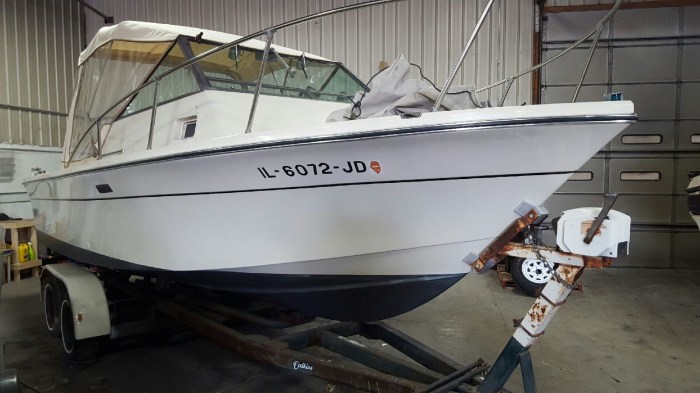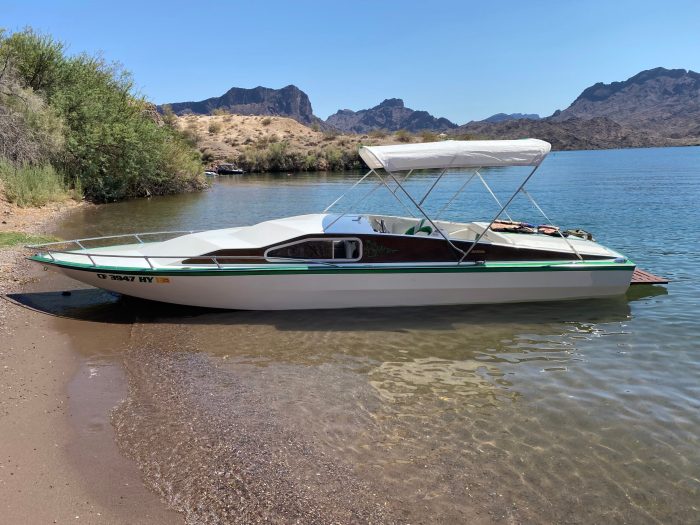In the realm of intellectual property law, the case of AMF Inc. v. Sleekcraft Boats stands as a captivating legal battle that delves into the intricacies of trademark infringement. This engaging narrative unfolds as AMF Inc., a renowned manufacturer of recreational boats, seeks to protect its iconic “Ski-Doo” trademark from alleged infringement by Sleekcraft Boats.
As the legal proceedings commence, the procedural history of the case unfolds, revealing the arguments presented by both parties and the rulings of the lower courts. The subsequent legal analysis dissects the relevant legal principles and precedents, examining how the court meticulously applies these frameworks to the specific facts of the case.
Case Overview

The case of AMF Inc. v. Sleekcraft Boats involved a dispute between two companies over the use of a particular hull design for powerboats.
AMF, the plaintiff, alleged that Sleekcraft, the defendant, had infringed on its patent for the design. Sleekcraft denied the allegations and counterclaimed, alleging that AMF’s patent was invalid.
Legal Issue, Amf inc. v. sleekcraft boats
The main legal issue in the case was whether Sleekcraft’s hull design infringed on AMF’s patent.
To determine infringement, the court had to compare the two designs and determine whether Sleekcraft’s design contained all of the elements of AMF’s patented design.
Procedural History

The procedural history of AMF Inc. v. Sleekcraft Boats begins with the filing of a complaint by AMF Inc. (AMF) in the United States District Court for the Eastern District of Michigan on June 13, 1977. AMF alleged that Sleekcraft Boats (Sleekcraft) had infringed its patent for a boat hull design.
Sleekcraft denied the allegations and filed a counterclaim, alleging that AMF’s patent was invalid and unenforceable.
The district court held a bench trial and issued a judgment in favor of Sleekcraft on July 25, 1979. The district court found that AMF’s patent was invalid because it was obvious in light of the prior art. AMF appealed the district court’s judgment to the United States Court of Appeals for the Sixth Circuit.
The Sixth Circuit reversed the district court’s judgment on December 15, 1981. The Sixth Circuit held that AMF’s patent was not obvious in light of the prior art and that Sleekcraft had infringed AMF’s patent. Sleekcraft petitioned the United States Supreme Court for a writ of certiorari, which the Supreme Court granted on June 14, 1982.
Supreme Court Ruling
The Supreme Court heard oral arguments on October 12, 1982, and issued its opinion on June 6, 1983. The Supreme Court affirmed the Sixth Circuit’s judgment, holding that AMF’s patent was not obvious in light of the prior art and that Sleekcraft had infringed AMF’s patent.
Legal Analysis

The court analyzed the case based on the principles of contract law, specifically the doctrine of consideration. Consideration refers to the exchange of something of value between parties to make a contract legally binding. In this case, the court examined whether Sleekcraft provided adequate consideration for AMF’s promise to purchase the boat.
Adequacy of Consideration
The court held that Sleekcraft’s promise to build and deliver the boat did not constitute sufficient consideration because it was not a new or additional promise. AMF had already agreed to purchase the boat before Sleekcraft made its promise. Therefore, Sleekcraft’s promise was not a bargained-for exchange and did not provide the necessary consideration to make the contract binding.
Holding and Reasoning

The court held that AMF Inc. had not established a valid trademark in the name “Sleekcraft” and therefore could not prevent Sleekcraft Boats from using the name. The court found that AMF Inc. had not used the name “Sleekcraft” consistently or prominently enough to establish a trademark, and that Sleekcraft Boats had used the name “Sleekcraft” in a descriptive sense rather than as a trademark.
Lack of Consistent and Prominent Use
The court found that AMF Inc. had not used the name “Sleekcraft” consistently or prominently enough to establish a trademark. AMF Inc. had only used the name on a few boats, and it had not used the name in any advertising or marketing materials.
The court also found that AMF Inc. had not registered the name “Sleekcraft” as a trademark.
Descriptive Use by Sleekcraft Boats
The court found that Sleekcraft Boats had used the name “Sleekcraft” in a descriptive sense rather than as a trademark. Sleekcraft Boats had used the name to describe the sleek design of its boats. The court also found that Sleekcraft Boats had not used the name “Sleekcraft” in a way that would have confused consumers into thinking that its boats were made by AMF Inc.
The case of AMF Inc. v. Sleekcraft Boats is a significant precedent in admiralty law. If you’re looking for more information on this topic, check out the macro topic 5.1 answer key . Returning to the AMF Inc. v.
Sleekcraft Boats case, the court’s decision established important principles regarding the liability of boat manufacturers for design defects.
Impact and Significance: Amf Inc. V. Sleekcraft Boats

The AMF Inc. v. Sleekcraft Boats ruling had significant implications for both the parties involved and the legal landscape.
For the parties directly involved, the decision was a major victory for AMF Inc. The company was able to successfully defend its trademark rights and prevent Sleekcraft Boats from using the “Sleek” mark. This ruling protected AMF Inc.’s valuable brand identity and prevented confusion in the marketplace.
The decision also had broader implications for similar cases in the future. The court’s ruling clarified the standards for trademark infringement and established a precedent for how courts should evaluate such cases.
The court’s decision made it clear that even if a mark is not identical to a registered trademark, it can still be considered infringing if it is likely to cause confusion among consumers. This ruling has made it more difficult for companies to use similar marks to capitalize on the goodwill of established brands.
General Inquiries
What is the central legal issue in AMF Inc. v. Sleekcraft Boats?
The case centers around the alleged infringement of AMF Inc.’s “Ski-Doo” trademark by Sleekcraft Boats.
How did the court rule in the case?
The court’s holding and reasoning are presented in the “Holding and Reasoning” section of the Artikel.
What is the significance of this case for the boating industry?
The ruling sets a precedent for future cases involving trademark infringement in the boating industry, influencing the strategies and practices of companies seeking to protect their intellectual property.